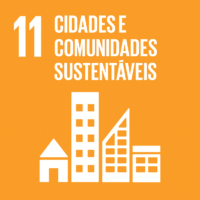Ciência_Iscte
Publicações
Descrição Detalhada da Publicação
A digital transformation approach to scaffold tourism crowding management: Pre-factum, on-factum, and post-factum
Proceedings - 2024 Joint International Conference on Digital Arts, Media and Technology with ECTI Northern Section Conference on Electrical, Electronics, Computer and Telecommunications Engineering, ECTI DAMT and NCON 2024
Ano (publicação definitiva)
2024
Língua
Inglês
País
Tailândia
Mais Informação
Web of Science®
Esta publicação não está indexada na Web of Science®
Scopus
Google Scholar
Esta publicação não está indexada no Overton
Abstract/Resumo
Tourism would probably not be economically sustainable without some localized crowding phenomena. Whatever the carrying capacity of the points of interest, their tourism managers should plan, monitor, and analyze visitors' crowding data to either prevent or mitigate the well-known effects of tourism overcrowding, such as degrading the tourists' experience, impacting negatively the environment and the local population, be it humans or wildlife.
The proposed digital transformation approach comprises three smart tourism tools (STTs) to scaffold crowding management issues, especially those related to overcrowding, i.e. when the carrying capacity of points of interest is exceeded. We report on the development and validation experiments of these STTs in the scope of the European Union RESETTING project.
The pre-factum STT aims at supporting simulation-based participatory discussions among tourism destination stakeholders. Proactive planning based on simulated scenarios allows the identification of potential tourism overcrowding situations and experimenting with possible mitigation actions.
The on-factum STT enables local monitoring of tourism crowding, by using several Wi-Fi activity sensors. The ability to obtain near real-time data, allows short-term decision-making, such as reinforcing or freeing up human and technical resources assigned to managing tourist crowding on the ground.
The post-factum STT is a geo-temporal 3D visualization platform to explore historical crowding data, visualize patterns, and understand and forecast trends. The main objectives of this STT are fostering cumulative learning from experience and forecasting the recurrence of troublesome crowding situations, allowing us to plan for mitigation actions.
Agradecimentos/Acknowledgements
This work was developed in the scope of the RESETTING project, funded by the European COSME Program (EISMEA). The cloud infrastructure (compute and storage) used was provided by INCD, also funded by FCT and
FEDER under project 01/SAICT/2016 #022153.
Palavras-chave
Digital transformation,Tourism overcrowding,Smart tourism toolkit,Carrying capacity,Agent-based modeling and simulation,Crowding sensor,Wi-Fi detection,Geo-temporal 3D visualization
Classificação Fields of Science and Technology
- Ciências da Computação e da Informação - Ciências Naturais
- Engenharia Eletrotécnica, Eletrónica e Informática - Engenharia e Tecnologia
- Geografia Económica e Social - Ciências Sociais
Registos de financiamentos
| Referência de financiamento | Entidade Financiadora |
|---|---|
| COS-TOURINN 101038190 grant | European COSME Program (EISMEA) |
| project 01/SAICT/2016 #022153 | Fundação para a Ciência e a Tecnologia |
| UIDP/04466/2020 | Fundação para a Ciência e a Tecnologia |
| UIDB/04466/2020 | Fundação para a Ciência e a Tecnologia |
Projetos Relacionados
Esta publicação é um output do(s) seguinte(s) projeto(s):
Contribuições para os Objetivos do Desenvolvimento Sustentável das Nações Unidas
Com o objetivo de aumentar a investigação direcionada para o cumprimento dos Objetivos do Desenvolvimento Sustentável para 2030 das Nações Unidas, é disponibilizada no Ciência_Iscte a possibilidade de associação, quando aplicável, dos artigos científicos aos Objetivos do Desenvolvimento Sustentável. Estes são os Objetivos do Desenvolvimento Sustentável identificados pelo(s) autor(es) para esta publicação. Para uma informação detalhada dos Objetivos do Desenvolvimento Sustentável, clique aqui.

 English
English



